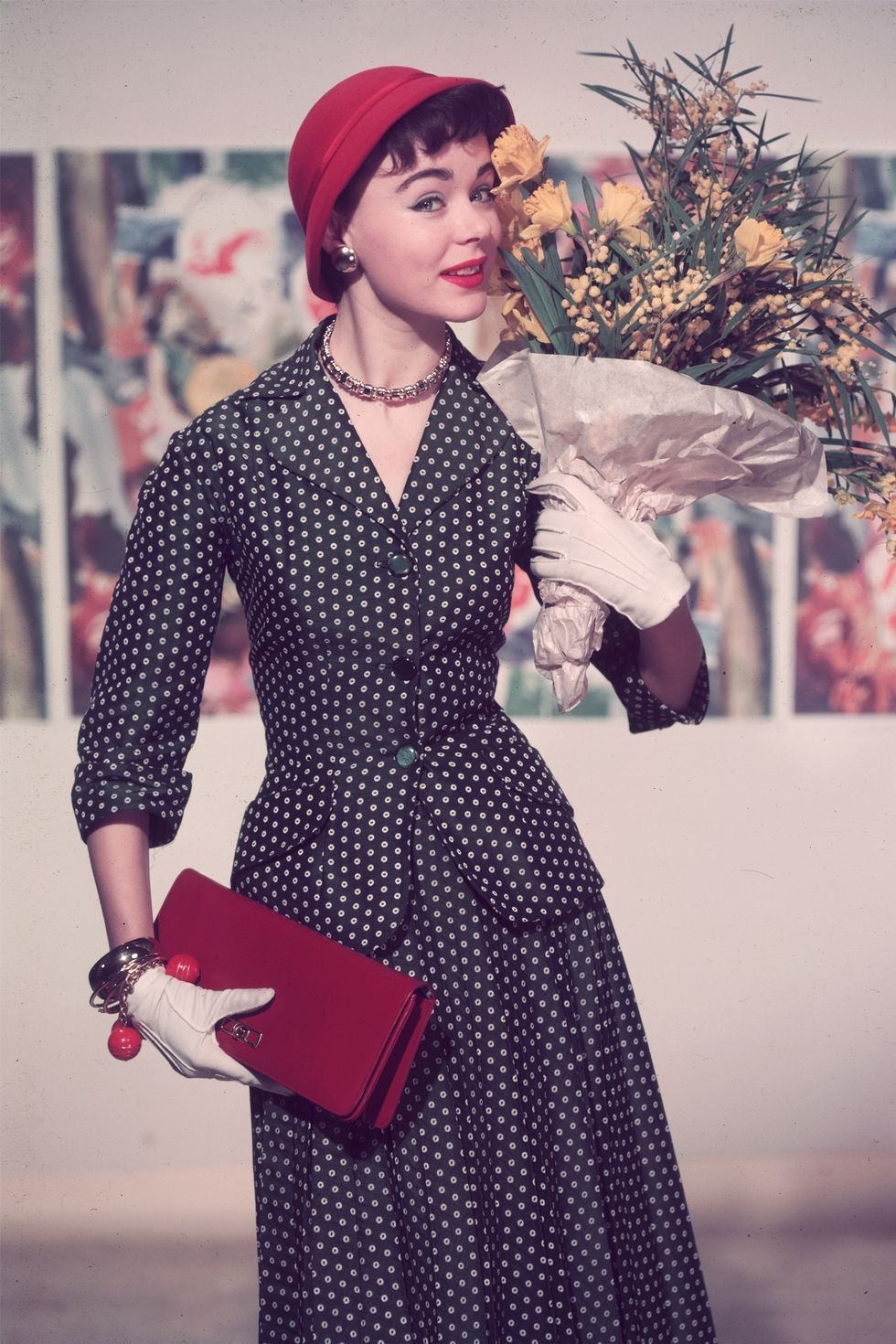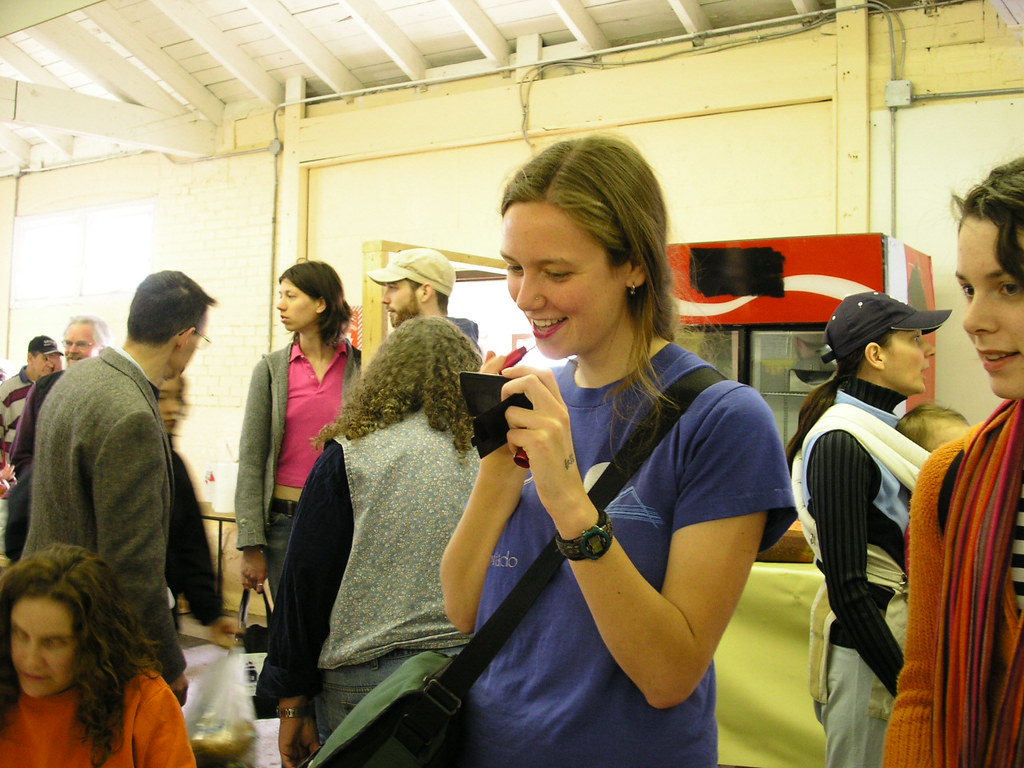The 1950s marked an era of glamour and sophistication in women’s fashion. With the aftermath of World War II behind them, women embraced a newfound sense of freedom and femininity. The fashion industry responded by creating designs that celebrated the hourglass figure, emphasizing grace, poise, and elegance. In this article, we will explore the remarkable fashion trends of the 1950s that continue to inspire modern-day fashionistas.
The Hourglass Silhouette:
One of the most iconic features of 1950s fashion was the emphasis on the hourglass figure. Women aspired to achieve a tiny waist and accentuated curves. This was achieved by wearing fitted tops and dresses that cinched at the waist, often with the help of corsets and girdles. The concept of the “New Look,” popularized by Christian Dior, revolutionized fashion with its nipped-in waists and full, voluminous skirts that created a beautiful hourglass shape.
Full Skirts and Petticoats:
The full skirt became a staple of 1950s fashion, adding a touch of femininity and grace to women’s wardrobes. These skirts were typically knee-length or calf-length and were often worn with layers of petticoats to achieve maximum volume. Petticoats were made of layers of tulle or netting, creating a charming and whimsical effect as women walked. The iconic “poodle skirt,” adorned with playful appliqué designs, became a symbol of youthful exuberance.
Pencil Skirts and Wiggle Dresses:
While full skirts were popular, pencil skirts and wiggle dresses also had their place in 1950s fashion. These figure-hugging garments showcased the curves of a woman’s body, emphasizing the hips and derriere. Pencil skirts were typically knee-length and paired with tailored blouses, while wiggle dresses featured a narrow, form-fitting silhouette that exuded sophistication and sensuality.
Elegant Tops and Blouses:
Tops and blouses in the 1950s were designed to complement the hourglass figure. Fitted, button-down blouses were popular, often featuring pointed collars and cap sleeves. Sweaters with elegant necklines, like boat necks or scoop necks, were also prevalent. The classic twin set, consisting of a fitted cardigan worn over a matching sleeveless top, became a fashion staple, exuding polished refinement.
Emphasis on Gloves and Hats:
Accessories played a crucial role in completing a woman’s ensemble during the 1950s. Gloves were considered an essential accessory and were worn on various occasions. From short, wrist-length gloves for daywear to elbow-length or opera-length gloves for formal occasions, they added a touch of elegance to any outfit. Hats were equally important and ranged from small, delicate pillbox hats to large, glamorous wide-brimmed hats adorned with feathers, ribbons, or flowers.
The Influence of Haute Couture:
Haute couture had a significant impact on 1950s fashion trends. Designers like Christian Dior, Coco Chanel, and Hubert de Givenchy influenced the styles and silhouettes of the decade. From Dior’s iconic New Look to Chanel’s timeless suits and Givenchy’s sophisticated gowns, their creations set the standards of elegance and luxury.
Fabrics and Patterns:
Women’s clothing in the 1950s often featured luxurious fabrics, including silk, taffeta, satin, and chiffon. Polka dots, gingham, plaid, and floral prints were all the rage, adding a playful and feminine touch to outfits. Pastel colors, as well as bold and vibrant hues, were popular choices, reflecting the optimism and exuberance of the era.
Fashion Style Trends in 1950s:
a. Casual Chic: The 1950s brought forth a sense of casual chic in women’s fashion. Women embraced more relaxed yet stylish looks for everyday wear. Capri pants, pedal pushers, and Bermuda shorts gained popularity, offering a more comfortable and sporty alternative to skirts and dresses. These bottoms were often paired with fitted sweaters, blouses, or casual button-down shirts, creating a casual yet put-together look.
b. Sportswear Influence: The 1950s saw an increased influence of sportswear in women’s fashion. Fashionable activewear, such as shorts, tennis dresses, and golf skirts, became popular for leisure and outdoor activities. The concept of “leisurewear” emerged, combining comfort and style in outfits designed for relaxation and casual outings.
c. Tailored Suits: The 1950s saw a resurgence of tailored suits for women. Inspired by menswear, these suits were often made of wool or tweed and featured structured blazers with padded shoulders and straight skirts. They exuded an air of professionalism and sophistication, making them a popular choice for working women.
d. Evening Glamour: The glamour of the 1950s extended to eveningwear. Women donned exquisite cocktail dresses and evening gowns for formal events. These dresses often featured luxurious fabrics, such as satin or silk, and intricate details like beading, sequins, and lace. Strapless or off-the-shoulder styles, sweetheart necklines, and full-length skirts created a sense of grandeur and elegance.
e. Outerwear and Coats: Outerwear played a significant role in completing a woman’s ensemble in the 1950s. Fitted, waist-length jackets and tailored coats were popular choices for everyday wear. Fur coats, particularly mink and fox, were highly coveted for their luxurious appeal. Trench coats and swing coats also gained popularity, offering stylish protection against the elements.
f. Swimwear: The 1950s witnessed a transformation in swimwear styles. High-waisted bikini bottoms, often paired with halter tops, were a common sight on beaches. One-piece swimsuits with structured busts and flattering silhouettes also became fashionable. Swimsuits featured playful patterns and vibrant colors, reflecting the spirit of fun and relaxation associated with beach culture.
g. Footwear and Accessories: Women’s footwear in the 1950s ranged from high heels to flats. Stiletto heels were popular for formal occasions, while ballet flats and saddle shoes were commonly worn for everyday activities. Accessories included waist-cinching belts, statement brooches, pearls, and cat-eye sunglasses, adding a finishing touch to outfits and enhancing their overall appeal.
The style trends of the 1950s embodied a blend of elegance, youthfulness, and practicality. From casual chic to glamorous eveningwear, these trends continue to influence contemporary fashion, reminding us of a time when impeccable style and sophistication were paramount.
How to Incorporate 1950s Women’s Fashion in 2023:
The timeless appeal of 1950s fashion continues to inspire modern-day trends. Incorporating elements of this iconic era into your wardrobe can add a touch of retro elegance to your personal style. Here are some tips on how to infuse 1950s fashion into your contemporary looks:
a. Silhouettes and Shapes: Embrace the hourglass silhouette that was synonymous with the 1950s. Look for dresses and skirts that cinch at the waist and feature full or pencil skirts. High-waisted pants and jeans can also recreate the vintage vibe. Pair them with fitted tops or blouses to accentuate your curves.
b. Prints and Patterns: Playful prints and patterns were a hallmark of 1950s fashion. Incorporate polka dots, gingham, and floral prints into your outfits. Opt for retro-inspired prints in dresses, blouses, or accessories to capture the essence of the era while keeping your look fresh and modern.
c. Statement Accessories: Pay homage to the 1950s with statement accessories. Incorporate cat-eye sunglasses, pearl jewelry, and brooches into your looks. Hats, such as pillbox hats or wide-brimmed styles, can add a touch of vintage glamour to any outfit. Complete your ensemble with gloves, which can be wrist-length or elbow-length for a retro flair.
d. Retro-inspired Hairstyles: Experiment with vintage-inspired hairstyles to complement your 1950s-inspired looks. Consider victory rolls, pin curls, or sleek waves. These hairstyles add an extra layer of authenticity to your overall ensemble and create a cohesive vintage aesthetic.
e. Modern Twists: Give your 1950s-inspired outfits a contemporary twist by incorporating modern elements. For example, pair a full-skirted vintage-style dress with a leather jacket for an edgy contrast. Mix and match vintage pieces with modern separates to create unique and personalized looks.
f. Color Palette: While the 1950s featured a range of pastels and vibrant hues, you can adapt the color palette to your own preferences. Incorporate classic 1950s colors like red, navy, black, or white, and mix them with modern neutrals or bold accents to create a balanced and modern color scheme.
g. Customization and Vintage Finds: Embrace the thrill of vintage shopping and customization. Explore thrift stores, vintage boutiques, and online platforms to find authentic 1950s pieces or garments inspired by the era. Tailor vintage finds to fit your body shape and style preferences, ensuring a perfect fit and a truly unique wardrobe.
By blending classic 1950s elements with contemporary fashion trends, you can create a style that pays homage to the past while expressing your individuality in the present. Have fun experimenting with different looks and incorporating 1950s fashion into your 2023 wardrobe, adding a touch of timeless elegance to your everyday ensembles.
Frequently Asked Questions (FAQs) about 1950s Women’s Fashion Trends:
Q1: What is the significance of the hourglass silhouette in 1950s women’s fashion?
A1: The hourglass silhouette was highly valued in the 1950s as it emphasized a tiny waist and accentuated curves. It represented femininity and was achieved by wearing fitted tops or dresses that cinched at the waist, creating an elegant and glamorous look.
Q2: What were some popular fabrics and patterns in 1950s fashion?
A2: Women’s clothing in the 1950s often featured luxurious fabrics like silk, taffeta, satin, and chiffon. Popular patterns included polka dots, gingham, plaid, and floral prints, which added a playful and feminine touch to outfits.
Q3: How can I incorporate 1950s fashion into my contemporary wardrobe?
A3: To infuse 1950s fashion into your modern looks, consider embracing the hourglass silhouette, incorporating prints and patterns from the era, and accessorizing with statement pieces like gloves, hats, and vintage-inspired jewelry. You can also add a modern twist to your outfits by mixing vintage pieces with contemporary items.
Q4: Who were some famous female celebrities of the 1950s known for their fashion?
A4: Several famous female celebrities of the 1950s were style icons. Grace Kelly’s classic elegance, Marilyn Monroe’s sultry glamour, Audrey Hepburn’s timeless sophistication, and Elizabeth Taylor’s opulent style were all influential in shaping fashion trends during that era.
Q5: What were some casual chic trends in 1950s women’s fashion?
A5: The 1950s saw the emergence of casual chic trends, including Capri pants, pedal pushers, Bermuda shorts, and fitted sweaters or blouses. These styles offered a more relaxed yet stylish option for everyday wear.
Q6: How can I recreate 1950s hairstyles to complement my vintage-inspired looks?
A6: To achieve 1950s-inspired hairstyles, consider trying victory rolls, pin curls, or sleek waves. These hairstyles can add an extra touch of authenticity to your overall ensemble, completing the vintage aesthetic.
Q7: What colors were popular in 1950s fashion?
A7: In the 1950s, pastel colors, such as soft pinks, mint greens, and baby blues, were popular choices. However, bold and vibrant hues like red, navy, black, and white also featured prominently in the color palette of the era.
Q8: Where can I find authentic 1950s fashion pieces or vintage-inspired garments?
A8: You can explore thrift stores, vintage boutiques, and online platforms specializing in vintage clothing to find authentic 1950s pieces. Additionally, many contemporary fashion brands incorporate vintage-inspired designs, making it easier to find modern items with a 1950s flair.
Q9: How did 1950s women’s fashion influence modern fashion trends?
A9: The fashion trends of the 1950s continue to inspire contemporary fashion. Elements like the hourglass silhouette, full skirts, tailored suits, and retro prints have made their way into modern designs, showcasing the lasting influence and appeal of 1950s women’s fashion.
Q10: What made 1950s women’s fashion unique compared to other eras?
A10: The 1950s was characterized by a celebration of femininity and a return to elegance after the austerity of World War II. The emphasis on the hourglass silhouette, the use of luxurious fabrics, and the combination of classic and playful designs set 1950s women’s fashion apart and contributed to its enduring popularity.








